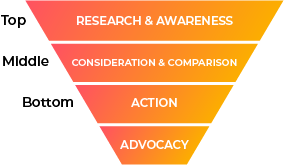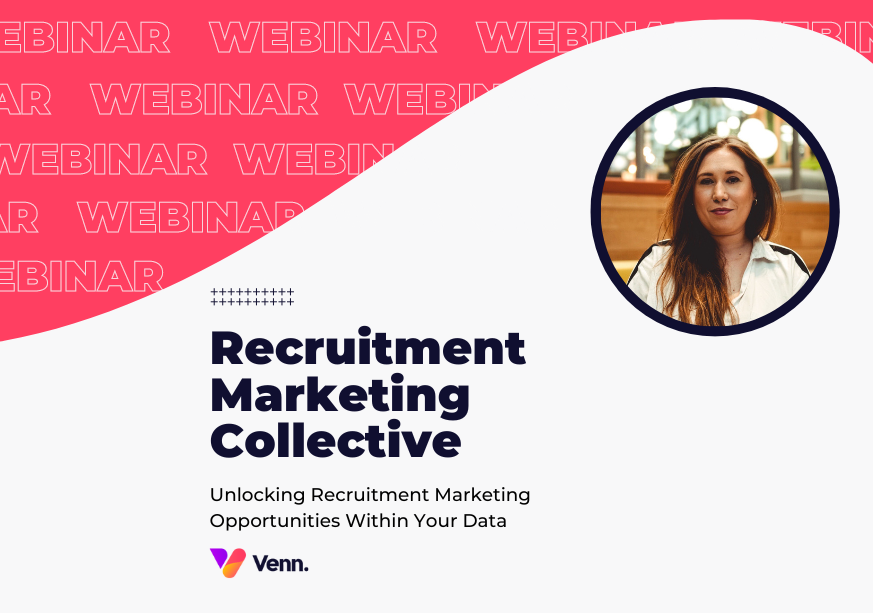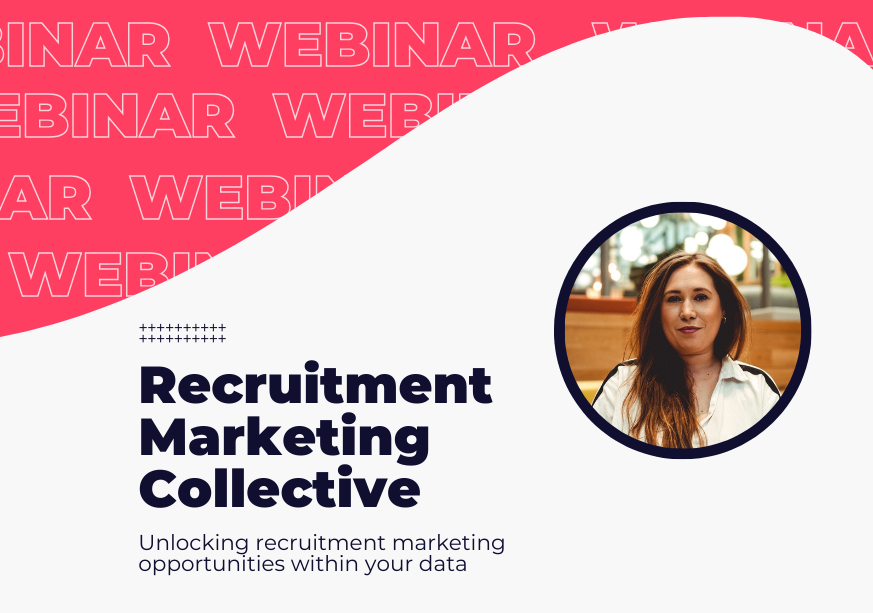Explore our NEW Knowledge Base and Help Desk to find everything you need to attract, engage and convert talent with your Vennture website.
Discover MoreWhat is Recruitment Marketing?
22 Sept, 20213 minutes
Recruitment marketing is the act of utilising multi-channel strategies to attract, retain and engage with candidates and clients. Used by HR professionals, recruitment agencies and talent acquisition experts, recruitment marketing takes on many forms.
What your recruitment marketing will look like depends on your goals as a business. For example, maybe you’re looking to attract internal talent by showcasing your company culture through a careers page or careers website. Or perhaps you’re an agency wanting to grow your talent pool or attract more client enquiries.

The recruitment marketing funnel is every step your user takes before converting. At each of these four stages, marketing plays a crucial role in engaging with your customers and moving them towards getting in touch or applying for a job.
Our strategies focus on attracting customers at the top of the funnel with a content-driven approach as specialists in recruitment marketing. The best strategies will then focus on certain results to indicate success. For example, increased website traffic, higher-quality candidate applications or more client leads.
Recruitment marketing incorporates all areas of digital, utilising multiple channels and platforms to reach potential candidates. This includes social media, Google, LinkedIn, content marketing and digital advertising to maximise ROI.

Why is recruitment marketing important?
Simply put, the days of cold calling and relying on crowded job boards are over. Recruitment marketing supports the sales process long-term with targeted campaigns and tactics that derive from your business goals.
Social media recruiting alone accounts for 79% of applicants, and 75% of candidates say they would research a company’s reputation before applying for a job. With this in mind, it’s clear that digital has become the most powerful tool at your disposal.
Similar to an eCommerce journey, today’s candidates take the time to consider an employer the same way they would a product. This process can take time, with 75% of professionals being passive job seekers. Not all candidates will apply for a job immediately, but if the candidate experience is positive, they will return for future career opportunities. Attracting the ideal candidate means considering both passive and active talent.
Attracting the ideal candidate first time is a challenge that comes with added cost, wasted time and frustrated employers, particularly in the current candidate-driven market. But what if investing in your employer brand could reduce average cost per hire by 50%?
As an employer, a dedicated careers website will enhance your recruitment activities whilst supporting external recruiters. Behind these websites are powerful recruitment platforms that allow for job posting, candidate applications and performance analytics. Recruitment technology such as our Vennture dashboard is the silent engine behind your recruiting. In fact, 68% of recruiting professionals identified recruiting technology as the best way to improve performance.
How to create a recruitment marketing strategy.
In its simplest form, strategy is where you are, what you want and how you’re going to get there.
As with any marketing, the first step is to define a clear objective. Once your goals are set, you can begin to identify who your users are. From here, you can create detailed user personas that will make your marketing work better for you.
“Go from the bottom of the funnel up. There’s no point putting more in at the top if you’re going to lose people out of the sides. We call it a leaky bucket. It’s all about plugging those holes so that when customers find you, their journey will be optimised for conversion.” - Stephanie Tabah, Client Strategy Manager.

Step 1. Brand.
Before investing in a website, you must identify who you are, what you do and why it matters to your customer. Does your brand appeal to your audience? Does the tone of voice speak in the proper manner to connect with the people you want to attract? If you can’t identify these fundamental details, then you can’t create the right collateral or the right channels.
By building a brand that showcases your business, you can attract better talent. And no, this is not just about a logo. Learn more about our approach to branding from our Brand Strategist.
Step 2. Destination.
Next up is your destination. Does it speak to the audience you’ve identified? And are you using the right destination?
“We often assume that your destination has to be your website, more often than not it is, however your point of conversion could be elsewhere. It all depends on your goals.” - Stephanie Tabah, Client Strategy Manager.
Your destination is often the first impression, so make it a good one. Identify who your website is for and optimise accordingly. Are you trying to attract candidates, clients or internal talent?
Step 3. Converting.
The converting stage is all about onsite content that pushes users towards your CTA.
Tracking is hugely important when it comes to conversion and engagement. You need to know what you’re trying to achieve in order to track the right KPIs.
Revisit the funnel and identify where you’re losing people. Perhaps you have a lot coming in through the top, but you’re losing them once on your site. This could be because your website lacks fundamental things users need during the buying process.
Step 4. Convincing.
Did you know, B2B buyers consume an average of 13 content pieces before deciding on a vendor?
Onsite content should inform, inspire and add value.
Identifying pain points allows you to create compelling onsite content that makes people think. Consolidate your content on your own platform and engage with users on your website through blog posts, videos, downloads and more.
People will be comparing your brand to other suppliers at this stage, so validation and ‘proof’ is crucial. Whether it’s blogs, case studies or landing pages, all this content will feed into the buyers final decision.
Step 5. Communicating.
Offsite content aimed at growing awareness and loyalty, driving traffic back to the site.
Utilise external platforms to reach your audience, pushing traffic back with clear CTA’s. Whether it’s through LinkedIn, email marketing, social media or advertising, this communication is essential for brand awareness.
This is all about the research and awareness stage and depends entirely on what you are trying to achieve. With this, we can filter out the people that don’t fit your demographic, making the sales process more efficient.
We work with recruitment agencies, talent acquisition specialists and businesses looking to enhance their employer brands. By building Recruitment Websites, Careers Websites and developing recruitment marketing strategies, we help companies drive business results with digital. Powered by our recruitment technology Vennture, we offer a full-service approach to recruitment marketing. To learn more about our approach to recruitment marketing or to speak to a specialist, get in touch today.



